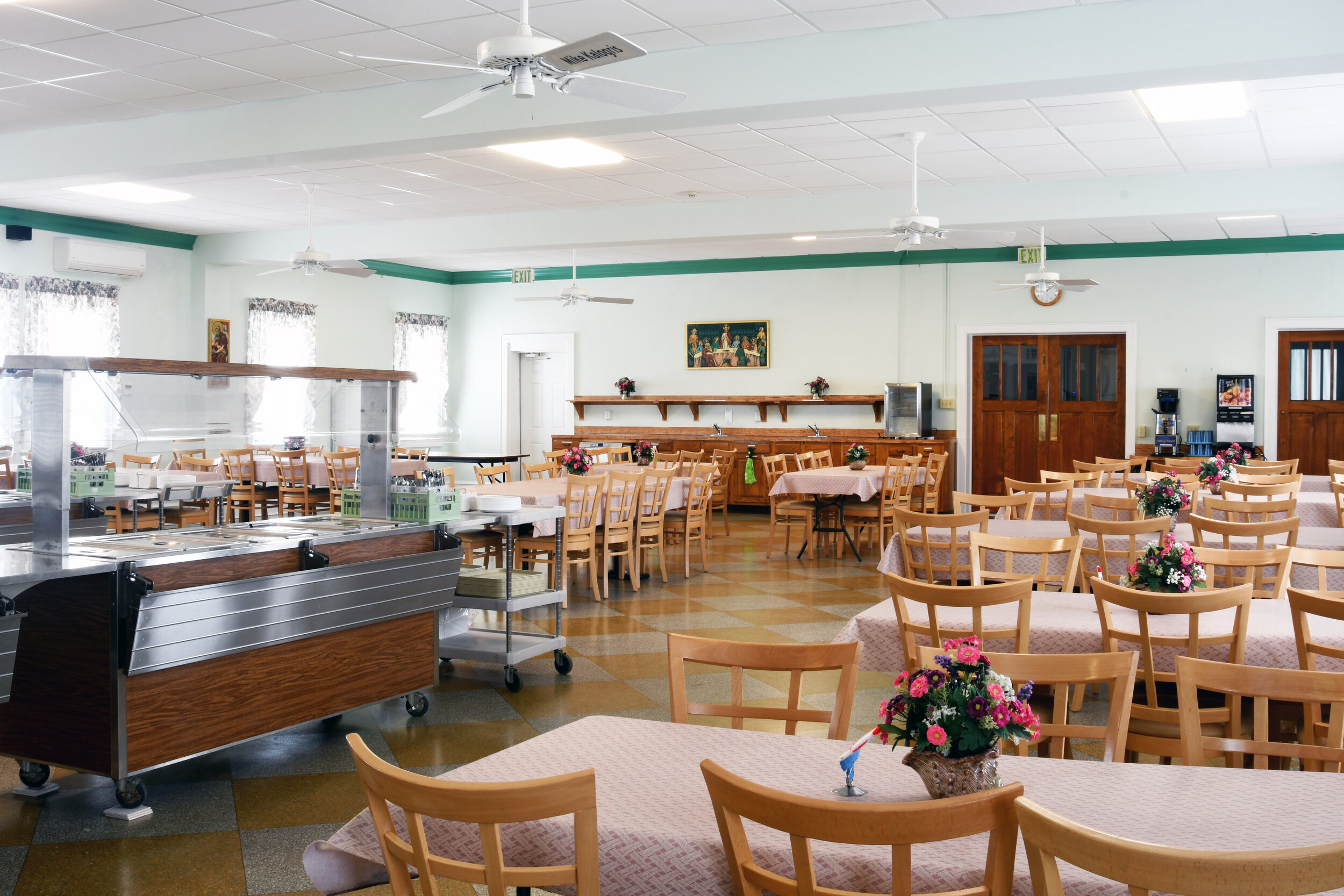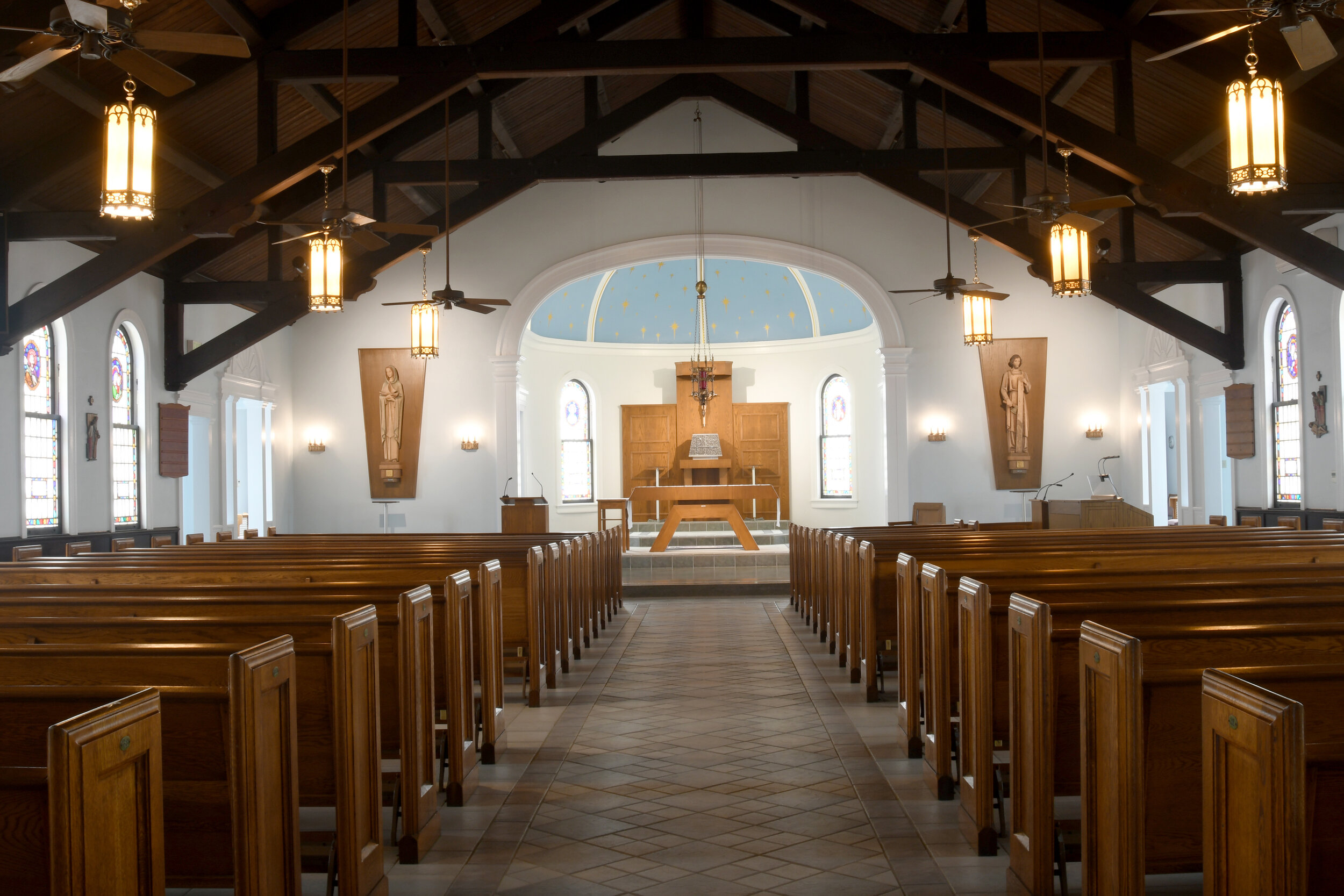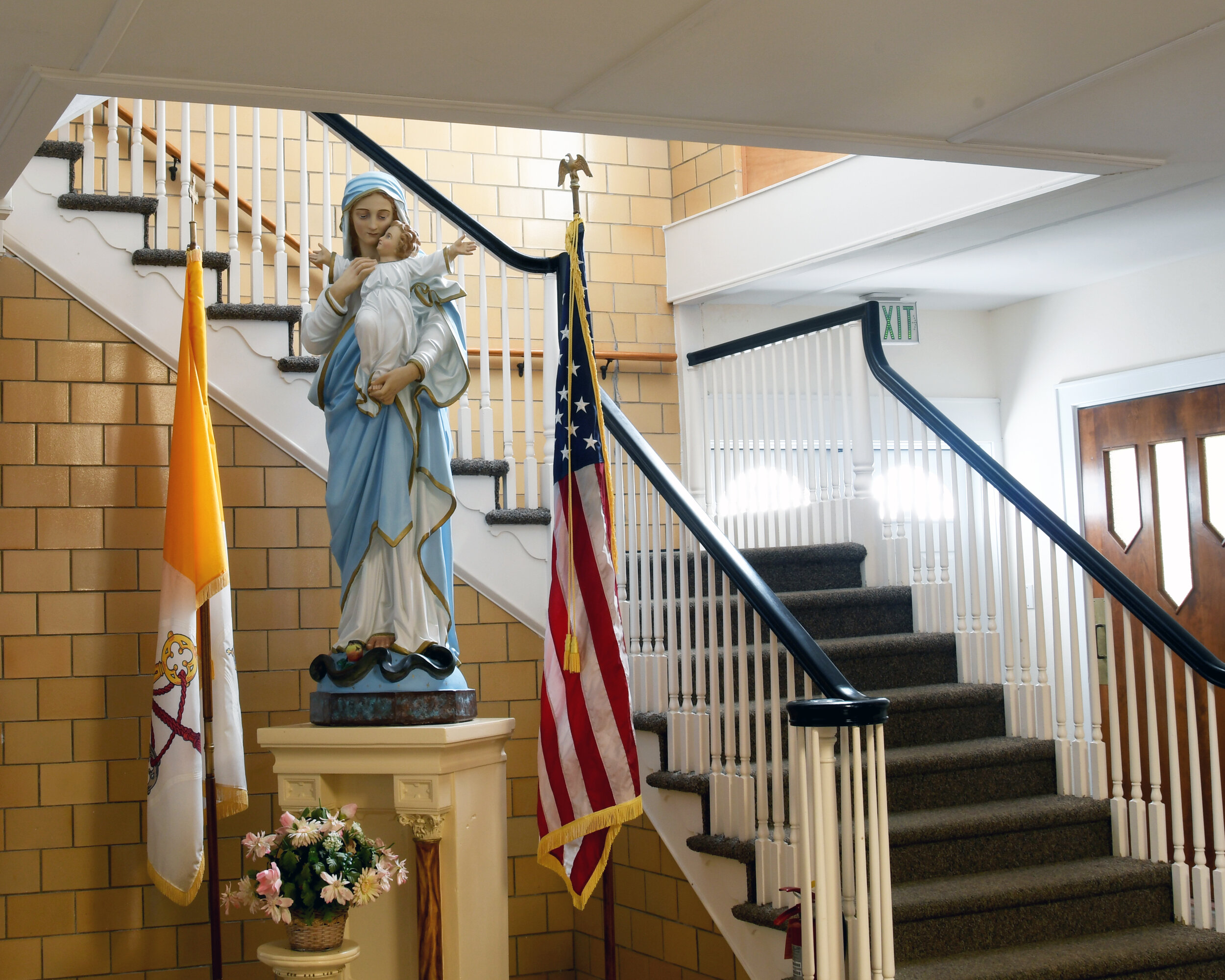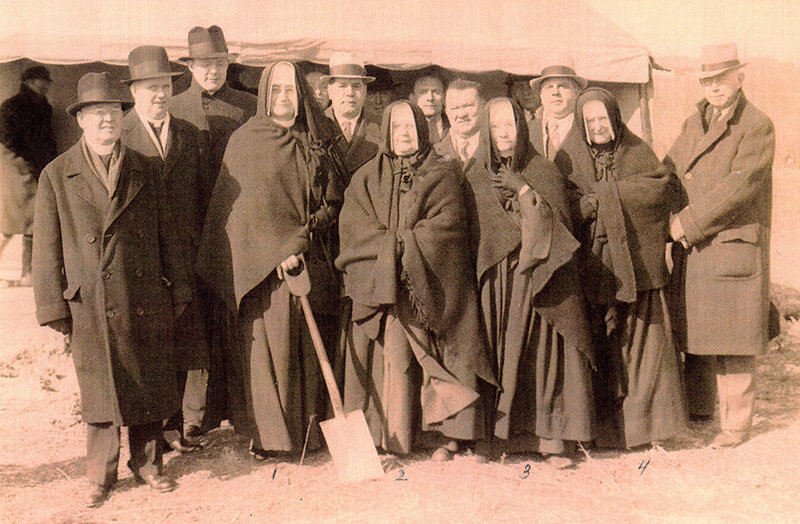One Last Look Behind the Walls of Villa Maria by-the-Sea
By now, almost everyone has learned there’s a good chance that by this time next summer, a familiar landmark on the Seven Mile Beach will be missing. Yes, Villa Maria by-the-Sea, a Stone Harbor institution for more than 80 years, is slated for demolition after this summer season. It’s time for a new, smaller and more efficient structure.
The sisters of the Immaculate Heart of Mary (IHM) have no doubt struggled with the question for years: How do we evolve our house to best serve the needs of our sisters? Their hearts no doubt have been torn. After all, the house has been a “home” for the order for eight decades. Almost like a member of the family.
But those sentiments needed to be balanced with the fiscal sanity and responsibility necessary in today’s world. Although “The Big House,” as it is lovingly referred to, no doubt feels like an old friend, alas, it was designed to function in a world several lifetimes ago. Sadly, the direction became clear over this past winter.
Aside from the spiraling costs of operation and maintenance, Villa Maria is also among the largest single taxpayers to the Borough of Stone Harbor. By replacing Villa Maria with a new facility that is economically more efficient, the new house will also probably be available for use for more than three months every year. It should also guarantee that the order will have a way to continue its tradition of seashore “rejuvenation” for decades to come. The sisters of the IHM gave the Seven Mile Times an exclusive look behind the scenes just prior to opening for what might very well be the final summer in this version of Villa Maria by-the-Sea.
The IHM seashore tradition began about seven miles to the north of the current Villa Maria, during the summer of 1913, in Sea Isle City. The family of Sister Kathleen Rowan IHM offered the use of their spacious summer home in Sea Isle to the order.
Amazed by the invigoration that the spiritual retreats by the sea provided, the order began negotiations in August of that summer for a property of its own. It purchased a building known as the Hotel Carlton in Cape May Point. It was a home that served the sisters well for almost 20 years. But by 1936, thanks in part to a series of storms in 1933 that expedited the encroaching sea line and began to undermine the structure’s foundation, it was obvious that the order would need to set out to find a less precarious location.
It was during this search that it was determined Stone Harbor could “provide everything that the order desired.” With that thought, it agreed to purchase 4½ acres of land adjacent to 111th and 112th streets for $2,000. The purchase was made from the surviving trustees and directors who dissolved the Stone Harbor Land Company; the Stone Harbor Realty Company; and the Borough of Stone Harbor, which had foreclosed on some of the lots.
It was reported at the time of groundbreaking on Feb. 2, 1937 that the nearest homes to Villa Maria at that time were almost all the way down at 96th Street. In fact, one newspaper report stated that there were fewer than 20 structures within a mile radius of the site. This development was a very big deal to Stone Harbor and Cape May County.
Initial budgets estimated the cost for erecting the structure would be $125,000. It’s important to keep in mind that at this time, the country was in the midst of the Great Depression – probably at least two years from rebounding. There wasn’t even a paved road from Stone Harbor to Avalon. The announcement of the addition of a structure of this size was unheard of in Cape May County. It was believed that Villa Maria would be the largest structure built in Cape May County since the Flanders Hotel had been built in Ocean City almost 15 years earlier. Certainly, the largest ever constructed anywhere on the Seven Mile Beach. To many, the announcement was considered a godsend, since work was hard to come by in the county, especially in the winter months.





The herculean task of raising a structure with what at the time was accommodations for 250 began in earnest after the ground was broken and blessed. Although the architect (Peter F. Getz) and the general contractor (Hadley Construction Company) both hailed from the Philadelphia area, the project impacted the lives of many families on the Seven Mile Beach and throughout Cape May County.
Lots of familiar local names were involved with the structure. For example, Stone Harbor‘s George Salvesen was responsible for the grading and pilings. Salvesen apparently subcontracted the pilings to J.O. Garrison from Cape May Court House. Stone Harbor Lumber partnered with larger suppliers to bring in more than 19 railroad cars of lumber. Colson’s in North Wildwood supplied much of the needed hardware. Frank Eberlane, a Stone Harbor plumber and one of the founders of Stephen C. Ludlam VFW Post 331, helped to supervise the laying of 13,000 feet of pipe for water and drainage. As many as 300 laborers worked on the project during that winter of 1937 – an amazing feat made that much more impressive given the economic conditions. The term “godsend” is mentioned repeatedly in reports from that time. The crews were issued “hurry up” orders by the sisters and everyone complied – including working through a two-day blizzard in February. Miracle, godsend – one thing is clear: It was an amazing accomplishment.
Initially the house consisted of very small rooms, a chapel reinforced by 27-inch steel beams, offices, sitting rooms, a dining room, kitchen, laundry and assembly hall. Today, those initial bedrooms have been converted to about 185 slightly larger, albeit still very small rooms. It would not be out of the question to call the accommodations, although comfortable, spartan by hospitality standards today.
Newspaper accounts at the time called it a miracle that construction could be completed in just 118 days – that’s less than four months! Today we’d probably just call it impossible. But the construction project also included a convent. The responsibility for taxes and upkeep falls on the order. The funding to maintain Villa Maria comes from monies assessed to each convent in the order. All expenses are handled by the order, but the sisters take care of the house themselves. They are the painters, carpenters, screeners and gardeners. They also take care of their own cooking, cleaning and routine maintenance.
Just to clarify, Villa Maria is a house of prayer. During a typical session, as many as 130 sisters may attend a 10-day retreat. For six days, the sisters are engaged in liturgy, conferences given by a priest, meditation and prayer. The sisters also have beach privileges on these six days. For the other four days, they are free to visit with family or friends, while enjoying the many offerings of the Seven Mile Beach. Naturally, they maintain their regular prayer activities all while on retreat.
Although nothing is confirmed at this time, unless you want to rely strictly on your memory, you might want to switch your phone to the camera function the next time you drive past Villa Maria. The sisters have some difficult decisions to make. So, at least for now, take in those beautiful classic lines that have become a way of life for so many of us in Stone Harbor one more time. More than anything, remember that the sisters of the IHM are the ones who have given the spirit and personality to Villa Maria. And if all goes well, they’ll be in Stone Harbor for years to come.

